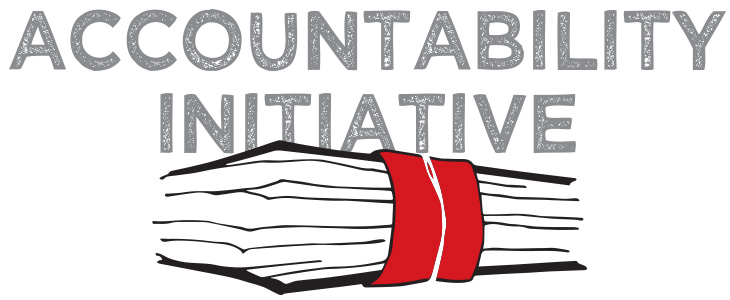
Training volunteers for a survey
30 July 2012
I am here in a district with two colleagues conducting a PAISA survey of the Mid-Day Meal scheme. The survey is long (28 pages long, to be precise) and we are looking at a number of variables regarding MDM funds, such as when do schools receive their funds, when do they spend it and how much do they spend.
If you thought designing a questionnaire (aka tool in this part of the world) for a survey is the difficult part, then you need to see the effort that goes into training. Volunteers, with usually no background in accounting, have to be taught to read passbooks, stock registers and utilization certificates, no mean feat!
We, being champions of decentralization, accomplished this in a decentralized manner. We first identified Master Trainers (MT’s) in each district. This was a fairly long-drawn out process. The PAISA associate’s (PA’s) contacted people, who had volunteered for earlier similar surveys and through them, identified interested candidates with a minimum qualification of a BA degree. These candidates were then tested on basic mathematical and financial skills, their knowledge of MDM and their ability to conduct trainings. Selected candidates were also required to have bikes (I know this sounds slightly biased, but if you see the long distances the MT’s have to travel, you would allow us this luxury). Based on these criteria, MT’s and backup-MT’s were selected from each district.
In parallel, the PA’s were mobilizing volunteers by talking to various NGO’s, youth organizations, previous PAISA survey volunteers and people who are interested in education. Volunteers also underwent a series of tests on their mathematical abilities and preliminary MDM understanding.
The day the training started, our PA’s and MT’s were on the phone throughout, talking with the chosen volunteers and making sure that they were coming for the training. There’s always that one heart-stopping moment before the training starts, when you are wondering how many volunteers are going to turn up – are there going to be too few? (In which case, one has to figure out whom else to talk to). Or are there going to be too many? (In which case, one has to figure out how to reduce the number to a manageable figure). In this particular district, we started out with 82 volunteers.
Teaching 82 adults the basics of record-keeping and MDM, in a short 3-day training is not an easy task. In addition, one has to keep in mind the fact that we are from a separate culture, both in terms of the learning environments they are used to, and in normal usage of the word. Add to this, these predominantly backward districts are not the most convenient of training locations – electricity is a huge problem, sound acoustics in large halls are a problem and most importantly, a marriage hall (which is where our training took place) doesn’t conveniently provide you with standard teaching aids such as a blackboard, chalks, markers etc. So unless you have planned for these materials well in advance, it’s going to be difficult to carry out training.
Just to give you an idea of the cultural differences
Gender differences: In our training we found that the women barely raised their voice. Only when they were pointedly asked to speak up, would they speak up, and that too after much hesitation. In addition, when we were assigning schools, the women wanted to be paired only with another man, not with another woman. When I asked them why, they said the men would be able to fill out the questionnaire better (even though they got the same training) and talk to the headmaster better. On the other hand, the men were unwilling to be paired with the women, and whenever we did pair two of them together, they would threaten to back out. So we had to pay attention to the men-women dynamics in the training, and make sure that the women were encouraged to raise their voice.
Individualistic vs collective: In urban learning environments, I have generally seen an emphasis on self-reliance and autonomy, which means that there is more emphasis on rewarding individual effort and competition. In contrast, in smaller-towns, I have seen a greater emphasis on teamwork and cooperation. What this translates into is the fact there is usually a lot of snide snickering when an individual is taking a lot of initiative; and also a lot of faith that collectively you would be able to figure out any problem in the field, you don’t have to individually learn everything.
Emphasis on hierarchy – Most volunteers are used to a learning environment where any kind of questioning seems like questioning the competency of the teacher. In such an environment, teaching volunteers to question head-masters is quite challenging.
Teaching adults comes with another set of challenges. One needs to make sure that the content and teaching methodology is engaging enough to keep adults interested. However, there is only so much variety that can be brought into teaching people about all possible scenarios that can arise during the filling out of a questionnaire. It is a detail-oriented task and sometimes it is necessary to go through all scenarios by brute-force without caring about the bored looks on people’s faces in the class. To relieve the boredom, we use a lot of role-playing. One student plays a headmaster, other students play the role of surveyors. The surveyors ask the headmaster a particular question, and the headmaster then give a convoluted answer (based on possible scenarios from the instruction manual). The surveyors then have to tell the class what they would fill out in the tool. Other students are then asked to provide feedback, comments and recommendations on what could be done better. Role playing is not only limited to questions in the questionnaire, it’s also done to figure out how to talk to difficult headmasters, what to do when the headmaster is not there and so on. In addition, group reading of the instruction manual is undertaken. A person is chosen randomly by the trainer to read a paragraph of the instruction manual. This is followed by discussion. This process is then continued till the end of the manual.
Large-groups come with another set of challenges! And I don’t have to go into details about it. Anybody can imagine how holding the attention of 82 people at one time can be a challenge. In order to overcome that, we had to resort to breaking the larger group into smaller, more manageable groups.
So that was about the training. Once the students went through all the details of the questionnaire, they then piloted the questionnaire under the watchful eye of the trainers. This was then followed by guided reflection on the problems faced during piloting, and ways to solve them.
But every cloud has its silver lining, and every training has that moment when you think that it was worth going through all the trouble. For me, that moment was when people got back from the piloting of the tools. It was a treat to see the look of accomplishment on people’s faces. This was the first time that they realized that it’s not difficult to elicit information from authority. Earlier, they thought that confrontation was only way of getting information, but after the piloting they realized that sometimes plain straightforward questioning also works! It was a treat for another reason as well – we got the questionnaires back with almost no errors and are now looking forward to the results of the survey! Keep watching this space for more information.





